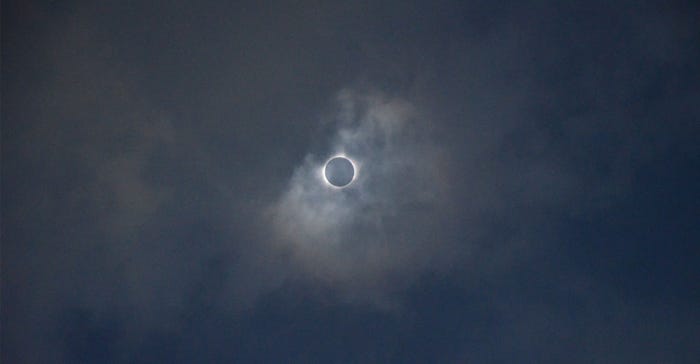
License plates from Nebraska, Kansas, Missouri, Iowa, Minnesota, Colorado, Oklahoma, Minnesota and some as far away as Virginia and Maryland packed Highway 4 leading up to Homestead National Monument near Beatrice to get a glimpse of total darkness during the 2017 solar eclipse in August.
Mark Engler, superintendent at Homestead National Monument of America, says an estimated 13,000 to 15,000 people were at the site's Heritage Center on Aug. 21.
"Some people we saw Saturday or Sunday we saw come back on Monday. Many left the area hoping to find sunnier skies, but those people trying to escape the clouds were still in the area for a period and enjoyed our community," says Engler. "There is a direct correlation between people who come to visit national parks and the economic value that springs into communities."
Dave Niemeyer, who farms about 2 miles west of Homestead, had a front-row seat to view the eclipse — and the eclipse traffic. Niemeyer, 68, has seen several eclipses throughout his life. However, Aug. 21 total eclipse drew the biggest crowd.
"We designated 3 miles of township road to park cars on, and those 3 miles were filled completely up. We live 2 miles west of Homestead, and visitors were parking all the way out near our place," Niemeyer says. "We sat on our porch steps and watched as the moon was almost all the way across the sun. Then the clouds parted, and we saw just a sliver of the sun left, and we saw the moon completely cover up the sun. We saw shadows underneath the trees, and it got dark. Our chickens went back in the chicken house, and barn swallows were flying up high like they would closer to twilight."
On the day of the eclipse, the monument brought in dignitaries like Lt. Gov. Mike Foley, state Sen. Roy Baker, U.S. Sen. Ben Sasse, and scientists such as NASA planetary defense officer Lindley Johnson and even Bill Nye, known for the television series, “Bill Nye: The Science Guy,” and now CEO of The Planetary Society and host of Netflix series “Bill Nye Saves the World.”
While totality lasted for mere minutes, Engler notes the event served as a way to draw people to Homestead National Monument. Fittingly, the site of the first claim under the 1862 Homestead Act, which vastly expanded European expansion of the Great Plains and western U.S., was also the shared destination for thousands of people from across the U.S. — all making the pilgrimage to get a glimpse of totality.
"This is the first time most of these people were here. Many were experiencing this monument for their first time," says Engler. "I hope they share this experience with their family and friends, and more people learn about this epic story and the role this law played in developing our nation."
About the Author(s)
You May Also Like






